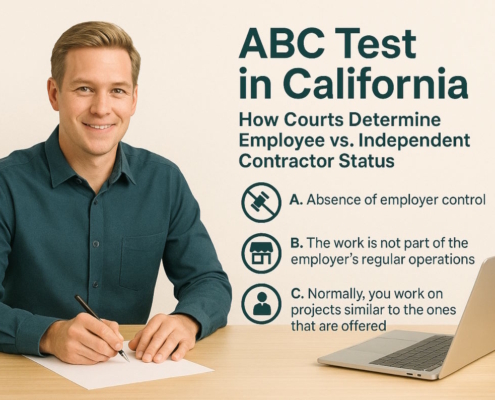What is the purpose of recruiter metrics?
Metrics used in recruiting monitor the effectiveness of hiring decisions and streamline an organization’s applicant acquisition process. When applied appropriately, these recruiter metrics aid in assessing the hiring process and the suitability of the candidates the organization brings on board. Furthermore, they give you information that will enable you to enhance your hiring procedure. They are a crucial component of a recruitment funnel powered by data.
Let’s examine the twenty-one most essential recruiter metrics.
- Filling time
The term pertains to the days required to locate and employ a fresh applicant. It is commonly determined by counting the days between granting a job request and the applicant agreeing to an offer. Time to fill can be influenced by several variables, including the recruitment department’s pace and the supply and demand ratios for certain positions.
This statistic is useful for business planning because it gives managers a realistic idea of how long it will take to find and hire another worker to replace the departing one.
- Hiring time
The term “time to hire” refers to the interval of days that occurs between the time an applicant applies or is contacted and the time they accept the position. Put differently, it clocks how long it takes for a candidate to advance through the hiring procedure after applying. Thus, time to hire offers a reliable indicator of the recruitment team’s performance. Another name for this measure is “Time to Accept.”
A shorter hiring period typically allows you to select superior applicants, keeping top talent from being snapped up by another business with a longer hiring period. However, it also affects the candidate experience because no one likes a drawn-out hiring procedure.
You might attempt to eliminate the bottlenecks in your hiring process by identifying where they exist.
The data may indicate, for instance, a significant lag between the phone interview and resume screening. Recruiting teams can address this potential scheduling problem by implementing automatic scheduling software.
Your recruitment process has a big impact on this measure. Hiring for positions requiring a single interview and a simple recruitment procedure will take less time than hiring for positions requiring a phone intake, evaluation day, and three sets of interviews.
- Hiring source
One of the most common recruiting KPIs is monitoring the sources from which your company hires new employees. This statistic is also useful for monitoring the efficiency of various recruitment channels. A few instances are social media, sourcing agencies, employment boards, and the company’s career page.
If you have a clear idea of which methods are giving you the best return on investment, you will be able to focus more on them and cut down on the ones that aren’t. For instance, if you find that most of your successful recruits come from there rather than LinkedIn, you should concentrate on your internal job board.
- Attrition in the first year
One important recruiting statistic that shows hiring performance is first-year attrition, often known as first-year/new hire turnover. Those who quit within the first year of employment are typically very expensive and never reach maximum productivity. Attrition in the first year might be controlled or uncontrolled.
Managed attrition refers to an employer-initiated contract termination. When people quit independently, it’s known as unmanaged attrition (sometimes called voluntary turnover). The former is frequently a sign of poor first-year performance or a poor fit for the team.
The latter is frequently a sign of unreasonable expectations that lead to the candidate’s resignation. This can result from a gap between the job posting and the position or the recruiter overselling the position and/or business.
One alternative interpretation of this number is the “candidate retention rate.”
- Hiring quality
A candidate’s first-year performance can be inferred from the quality of hire, which is frequently assessed by looking at someone’s performance rating. Hiring success is predicted by candidates with high-performance scores, and the inverse is true for those with low-performance scores.
Poor performance reviews in the first year are a sign of poor hires. One poor hire may result in thousands of dollars in direct and indirect expenditures.
You can gauge the quality of the sourcing channel in conjunction with the channel used to find the candidate.
Since there are several ways to quantify it, hiring quality is among the most popular and complicated recruiting metrics.
The Success Ratio’s input is the quality of hire. The success ratio is calculated by dividing the total number of hired candidates by the number of recruits who perform well. A high success ratio indicates that the majority of employed applicants perform effectively; on the other hand, a low ratio indicates that your selection procedure has to be improved!
The success ratio is the number of satisfactory hires divided by the total number of candidates hired. The recruitment utility analysis uses the success ratio as an input. Using this technique, you may compute a return on investment (ROI) for various selection tools.
- Contentment with the hiring manager
Hiring manager approval is a recruiting indicator that suggests a successful recruitment process, similar to the quality of hire. A candidate is more likely to thrive and blend in with the team when the hiring manager is happy with the new hires on their team. Stated differently, there’s a higher chance of the candidate being a successful hire.
- Job satisfaction among candidates
An effective technique for monitoring whether the expectations made during the recruitment process reflect reality is to examine candidate job satisfaction. Low applicant job satisfaction is indicative of inadequate job descriptions or mishandled expectations.
A realistic job preview can help you better manage a low score.
- Candidates for each position
The number of candidates for each job opportunity or hire indicates how popular the position is. A high volume of applications may indicate an overly general job description or a strong demand for positions in that field.
There may be more competent applicants than openings, but this is not always true. It is possible to decrease the number of applicants without lowering the number of qualified applicants by tightening the job description and adding several “hard” criteria. Additionally, you may concentrate more on sourcing through sources that have, in the past, produced competent applicants.
- Selection ratio
The number of selected applicants relative to the total number of applicants is known as the selection ratio. Another name for this ratio is the submittals-to-hire ratio.
The selection ratio equals the number of hired candidates divided by the total number of candidates.
The number of candidates for each vacancy and the selection ratio are extremely similar. The ratio gets close to 0 when there are many candidates. The selection ratio may be used to calculate the usefulness of a particular selection and recruiting strategy by providing details about, among other things, the worth of various assessment and recruitment instruments.
- The cost per hire
The cost-per-hire recruitment metric is the amount spent on hiring divided by the quantity of new hires.
The cost per hire is made up of several cost structures separated into external and internal costs. Examples of internal costs are hiring manager expenses, administrative expenses, training and development expenses, and compliance expenditures. Background checks, sourcing fees, travel charges, and marketing costs are external expenses.
You can determine the overall cost of hiring by quantifying each.
- Applicant experience
It is important to consider the candidate’s experience while discussing recruiting metrics. Job searchers see an employer’s hiring and onboarding procedure as the candidate experience, which is frequently assessed through an applicant experience survey. This survey helps discover important aspects of the experience that can be enhanced using the Net Promoter Score.
Remember that there are various steps in the recruitment process when you can gauge the candidate’s experience. Additionally, don’t discount failed applicants. To obtain a more realistic view of the status of your applicant experience, you should evaluate them in addition to the candidates you ultimately decide to hire.
- Acceptance rate of offers
The number of applicants who accepted a job offer is compared to the total number of applicants who got an offer to determine the offer acceptance rate. A low rate suggests that there might be compensation issues. In an attempt to lessen the impact of a job offer being declined, the compensation may be addressed sooner in the recruiting process when these issues frequently arise for specific functions. As an illustration, consider including a compensation range in the job description or requesting the candidate’s expected salary.
- Percentage of available positions
You can apply the percentage of available positions to the total number of roles in particular departments or the entire company.
A department’s high percentage of available positions may indicate that the roles are in great demand (due to rapid growth, for example) or that there is a dearth of candidates for those jobs at the moment. You can use this indicator to gain useful insights into current labor market changes and trends while developing your talent acquisition method.
- Application completion percentage
This talent acquisition metric displays the percentage of applicants who began and completed a job application. The reverse can also be measured as the “Applicant drop-off rate,” or the percentage of applicants who did not complete the application.
The application completion rate is particularly significant for companies that have sophisticated online recruiting platforms. Before a candidate can apply for a job, many big businesses require them to enter their full curriculum vitae into their computers manually. A drop-off in this procedure is a sign of issues, such as an unfriendly interface or a web browser that isn’t compatible with the application system.
Testing it out on your own is a quick and easy approach to ensure no problems could arise during your application procedure. This will assist you in identifying potential problem areas for your applications and how to address them.
This recruitment metric aligns nicely with the next point.
- The efficiency of the recruitment funnel
The hiring process can be compared to a funnel, where sourcing is the first step and contract signing is the last. By calculating the efficacy of each step, you can get the yield ratio for each phase in the funnel.
As an illustration:
15:1 (50 CVs are filtered out of 750 applications).
5:1 (ten candidates are sent to the recruiting manager after 50 CVs are reviewed)
2:1 (10 applicant submissions result in 5 hiring manager acceptances)
5:2 (two final interviews after five preliminary ones)
2:1 One offer comes from two final interviews.
1:1 (1 offer for every hire)
Over the past few years, HR technology advancements have resulted in significant changes to the recruiting funnel. The initial stages are frequently simplified: automation automatically sorts resumes and chooses the best fit. Some businesses use video interviews to alter submissions and even first interviews.
Put another way, be prepared for this funnel to shift over time.
- Effectiveness of the sourcing channel
The number of possible applicants and conversion rate that each of your hiring channels is bringing in may be measured with sourcing channel efficacy. You can rapidly assess the efficacy of various channels by comparing the number of applications with the job posting views.
A straightforward way to accomplish this is to use Google Analytics to trace where people who saw the job posting on your website originated.
This conversion rate can be considerably more precisely determined by defining “goals,” such as successfully submitting an application form. Perhaps those applying through Twitter and LinkedIn don’t apply, but those applying through Facebook do!
- Cost of sourcing channels
Additionally, you may determine the cost-effectiveness of your various sourcing channels by factoring in ad spend—the total amount of money allocated to those platforms’ advertisements. The sourcing channel cost per hire is calculated by dividing the ad budget by the total number of people who applied via the job posting.
- The expense of reaching the optimal level of productivity (OPL)
The cost of bringing someone up to speed is known as the cost of reaching Optimum Productivity Level (OPL). This covers various expenses, including those related to training, onboarding, and on-the-job training for managers and coworkers. Typically, until the employee reaches 100% OPL, a portion of their pay is also factored in.
In addition to this measure, the “logistical” cost is associated with personnel replacement. Another name for them is the cost per hire. According to research by Oxford Economics (2014), OPL costs are about $20,200 in retail, $27,000 in media, and $44,000 in law.
- Time until productivity
The time it takes to get workers caught up and productive is known as the “time to productivity,” or “time to optimum productivity level.” It is the interval between the employee’s first day of employment and their full integration into the company.
The same Oxford Economics study indicates that it typically takes a new hire 28 weeks to reach their OPL. Workers in the same business typically spend less time, whereas workers outside the industry typically take far longer. The greatest wait times are for university graduates, school dropouts, and jobless people.
- Negative effects
Unfair and prejudiced employment practices negatively impact members of protected groups. This is known as adverse impact. These practices may involve recruiting, training and development, transfers, promotions, and performance reviews.
Monitoring this measure is essential to ensuring that your hiring procedures are equitable, that you comply with local laws, and that your HR policies and initiatives may help create a more inclusive and diverse workforce.
You can use the four-fifths rule as a helpful tool to assess whether your hiring methods and selection procedure are negatively impacted. This statistic states that in order to prevent discrimination against protected groups, the selection rate of protected groups, which include sex, race, age (40 and over), disability status, religion, and veteran status, should not be less than 80% of the selection rate of non-protected groups.
For instance, if 20% of male and 8% of female job applicants advance to the interview phase, you can divide 8 by 20 to obtain a 40% effect ratio. This is under eighty percent, indicating a negative outcome for female applicants in this instance.
- Metrics for recruiter performance
Measuring the performance of your recruiters is just as critical as monitoring the effectiveness of your recruitment channels or process. You may accomplish this through various indicators, most of which center on the email channel that your recruiters utilize to connect with potential applicants.
You may check the email open rate, for instance, which is the proportion of emails sent to applicants that they opened. Another useful metric to consider is the response rate, which indicates the proportion of emails that applicants respond to. Another measure is the percentage of emails that result in interviews, otherwise known as the conversion rate.
Now it’s your turn!
Recruitment analytics are built around these 21 recruitment metrics.
So, how do you interpret the results? You can compare your performance to industry comparisons, define internal recruiting metrics benchmarks, and monitor your progress.































